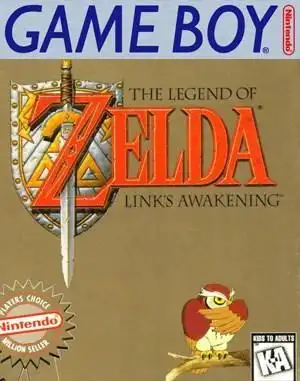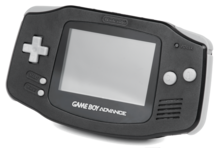Remember that feeling? Holding that chunky grey (or maybe clear purple?) brick of a console, the faint green glow of the screen illuminating pixelated worlds? For many of us, that handheld magic included a truly unique adventure: The Legend of Zelda: Link’s Awakening. More than just a portable spin-off, this 1993 Game Boy title carved out its own strange, beautiful niche in the sprawling history of Hyrule... or rather, not Hyrule.
Shipwrecked on the mysterious Koholint Island, Link finds himself in a place unlike any he'd explored before. No Princess Zelda to rescue, no Ganon to thwart. Instead, a quirky cast of characters, talking animals, and familiar faces from other Nintendo franchises populate a world held together by the slumber of the Wind Fish. To escape, Link must awaken this mythical creature by gathering eight instruments hidden across the island. It was a bold, experimental premise for the series, and it absolutely paid off.
A Dreamlike Adventure on a Tiny Screen
Developing a full-fledged Zelda title for the humble Game Boy was no small feat in the early '90s. Nintendo R&D1, with Takashi Tezuka at the helm (who also directed A Link to the Past), managed to distill the core Zelda loop of exploration, puzzle-solving, and combat onto a tiny, monochrome screen. And they didn't just port the formula; they infused it with a distinct personality.
Koholint Island feels both familiar and utterly bizarre. You'll find classic Zelda environments like forests and mountains, but also unexpected ones like a chain chomp living in a doghouse or a talking owl guiding your way. This surreal, dreamlike quality is the game's beating heart, making every new discovery genuinely surprising.
More Than Just Another Zelda
While it retained the top-down perspective and item-based progression, Link's Awakening introduced mechanics that set it apart.
- Rock's Feather: A seemingly simple item that allows Link to jump! This opened up new platforming challenges and even included delightful 2D side-scrolling sections reminiscent of Mario games.
- Fishing: The first appearance of this now-staple Zelda mini-game, offering a relaxing break and valuable rewards.
- Quirky Characters: From the philosophical Walrus to the aspiring musician Marin, the inhabitants of Koholint are memorable and often hilarious, adding layers of charm to the world.
- Item Combinations: Many classic items returned, but often with new uses or combined effects that led to clever puzzles.
This willingness to break the mold while staying true to the core Zelda spirit is a major reason why the game resonated so deeply. It felt like a secret, personal adventure tucked away on a handheld.
Exploring Koholint Island
Despite the technical limitations, Koholint Island felt vast and full of secrets. The world design was intricate, with areas unlocking gradually as you acquired new items like the Pegasus Boots for dashing or the Hookshot for grappling across gaps.
The dungeons in The Legend of Zelda: Link’s Awakening are standout examples of classic Zelda design. Each one felt distinct, built around the item you'd find within and culminating in epic boss battles that often took up half the screen! Getting to the dungeons often involved extensive overworld quests, adding to the sense of adventure and requiring you to truly learn the island's layout. Finding hidden items like Secret Seashells, which could unlock powerful gear, made exploration incredibly rewarding.
The Sounds and Sights of a Dream
For a Game Boy title, the graphics were remarkably expressive. Character sprites were clear, environments were detailed, and important elements stood out. It often felt like a miniature SNES game in your hands.
And then there's the music. Ryo Nagamatsu's soundtrack is iconic, perfectly capturing the whimsical, melancholic, and adventurous tones of Koholint Island. The "Ballad of the Wind Fish" is an absolute earworm, a central melody that ties the entire experience together and remains one of the most beloved tunes in the series.
How to Revisit Koholint Today
Feeling the pull of nostalgia? Thankfully, experiencing The Legend of Zelda: Link’s Awakening isn't limited to finding a working Game Boy and cartridge (though that's a pure retro thrill!).
- Original Hardware: The classic experience, if you can find it.
- Emulation: Playing on PC or modern retro handhelds via emulation allows for save states, fast-forwarding, and playing on different screens. Resources like Archive.org can sometimes provide access to vintage software legally where available.
- Nintendo Game & Watch: Nintendo released a special Game & Watch system featuring the original Game Boy version, a neat collector's item.
- Nintendo Switch Remake: A beautiful, fully-realized 3D remake was released for the Switch, offering a modern way to play the same story and world with updated graphics and quality-of-life improvements.
Whether you play the pixelated original or the charming remake, the core magic of Koholint Island endures.
Why Link's Awakening Still Resonates
The Legend of Zelda: Link’s Awakening was a brave departure for the series, proving that Zelda could thrive outside of Hyrule and explore themes beyond the standard hero's journey. Its unique blend of whimsical charm, surreal storytelling, clever design, and unforgettable music cemented its status as a masterpiece. It's a game that feels deeply personal, like a vivid dream you carry with you long after you've woken up. If you've never visited Koholint, or if it's been decades, it's absolutely worth diving back into this pocket-sized adventure.
FAQ
Is The Legend of Zelda: Link’s Awakening available on Nintendo Switch?
Yes, there is a full 3D remake of The Legend of Zelda: Link’s Awakening available on the Nintendo Switch, faithfully recreating the original game's world and story with updated graphics.
What is the main difference between the original Game Boy game and the Switch remake?
The Switch remake features completely overhauled 3D graphics and orchestrated music, along with some quality-of-life improvements like more assignable buttons and a larger inventory. The core story, world map, dungeons, and puzzles remain largely the same as the original Game Boy version.
Do I need to play other Zelda games to understand Link's Awakening?
No, The Legend of Zelda: Link’s Awakening has a self-contained story that takes place on Koholint Island, separate from Hyrule. While Link is the protagonist from other games, the plot and characters here are unique to this title and require no prior knowledge of the series.
Why is Link's Awakening considered unique among Zelda games?
It's unique for its surreal, dreamlike setting on Koholint Island, its inclusion of characters from other Nintendo franchises (like Kirby and Mario enemies), its introduction of the jump mechanic (via Rock's Feather), and its focus on a more personal, introspective story compared to the typical save-the-princess narrative.


